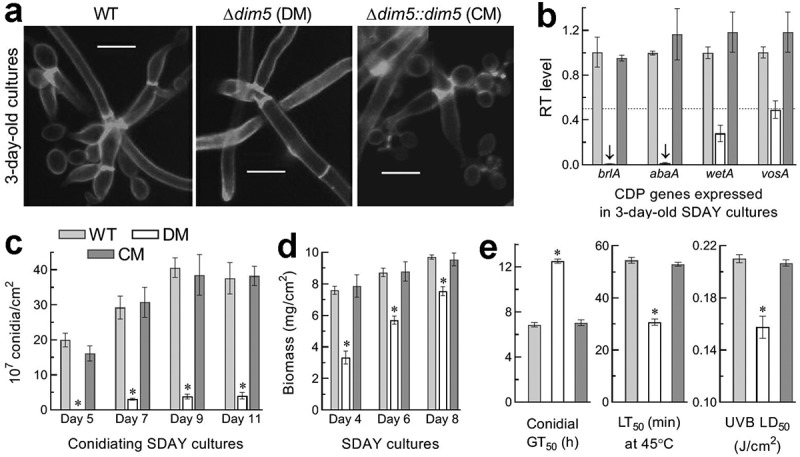Figure 5.

Impact of dim5 disruption on conidial production and quality. (a) Microscopic images (scale: 5 μm) for conidiation status of samples (stained with calcofluor white) taken from the 3-day-old SDAY cultures, which were initiated by spreading 100 μl of a 107 conidia/ml suspension per plate and incubated at the optimal regime of 25°C and L:D 12:12. Note the rachises (conidiophores) and conidia formed by the control (WT and CM) strains but not by the Δdim5 mutant, the hyphae of which remained undifferentiated yet. (b) Relative transcript (RT) levels of three CDP genes and downstream vosA in the 3-day-old SDAY cultures of dim5 mutants with respect to the WT standard. The dashed line denotes a significant level of one-fold (50%) down-regulation. (c, d) Conidial yields and biomass levels measured from the SDAY cultures during a 11-day incubation at the optimal regime. (e) The parameters of conidial quality indicated by GT50 (h) for the time of 50% germination at 25°C (viability), LT50 (min) for tolerance to a wet-heat stress at 45°C and LD50 (J/cm2) for resistance to UVB irradiation (weighted wavelength: 312 nm) respectively. *P< 0.01 (d) or 0.001 (c, e) in Tukey’s HSD tests. Error bars: SDs of the means from three independent replicates
